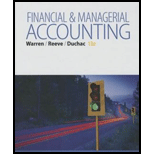
Concept explainers
Accounts receivable refers to the amounts to be received within a short period from customers upon the sale of goods and services on account. In other words, accounts receivable are amounts customers owe to the business. Accounts receivable is an asset of a business.
Bad debt expense is an expense account. The amounts of loss incurred from extending credit to the customers are recorded as bad debt expense. In other words, the estimated uncollectible accounts receivable are known as bad debt expense.
Direct write-off method:
This method does not make allowance or estimation for uncollectible accounts, instead this method directly write-off the actual uncollectible accounts by debiting bad debt expense and by crediting accounts receivable. Under this method, accounts would be written off only when the receivables from a customer remain uncollectible.
To journalize: The collection of $600 cash and write-off of Person R’s $1,350 uncollectible accounts, using direct write-off method.
Want to see the full answer?
Check out a sample textbook solution
Chapter 8 Solutions
Bundle: Financial & Managerial Accounting, 13th + CengageNOWv2, 2 terms (12 months) Printed Access Card
- ARC Stores has total debt of $8,325 and a debt-equity ratio of 0.63. What is the value of the total assets?arrow_forwardI am searching for the correct answer to this general accounting problem with proper accounting rules.arrow_forwardPlease explain the solution to this general accounting problem with accurate principles.arrow_forward
- The selling price is $35.00 per unitarrow_forward?arrow_forwardFor the current year ended March 31, Davidson Company expects fixed costs of $624,000, a unit variable cost of $75, and a unit selling price of $94. a. Compute the anticipated break-even sales (units). b. Compute the sales (units) required to realize an operating income of $168,000. (Round your answer to nearest units)arrow_forward
- Century 21 Accounting Multicolumn JournalAccountingISBN:9781337679503Author:GilbertsonPublisher:Cengage

